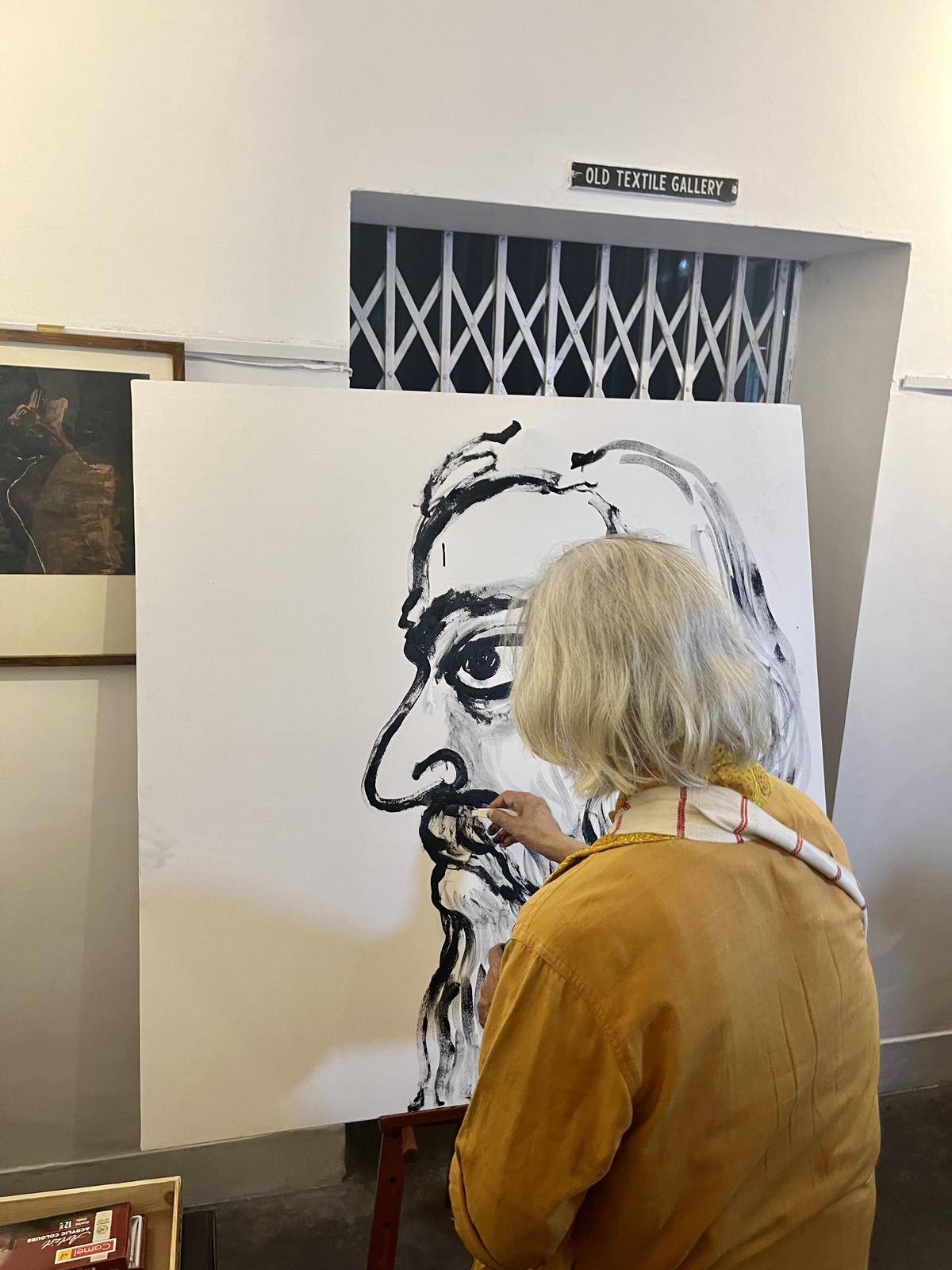Tagore’s hair, along with his paintings and manuscripts, are on display at the Lalit Kala Academy. | Photo courtesy: Biswanath Ghosh
When Rabindranath Tagore’s funeral procession moved from his house to the cremation ground in August 1941, the streets were thronged with people, all eager to see his mortal remains, some rowdy people even daring to pluck out his hair as a souvenir. This is something that almost every Tagore devotee living in Kolkata knows.
However, not many may know that the poet himself handed over locks of his hair as a wedding gift in 1925 to Ranu Mukherjee – a young patron of the arts and considered his muse during the last decades of his life. During their association, Lady Mukherjee (1906-2000) received many of Tagore’s paintings – his own creations – as gifts, and when he died, he also had many letters, manuscripts and personal belongings such as pens, pencils and hats.
The Lalit Kala Akademi, founded by him in the 1930s, found its place in the 1960s and it was here that Tagore’s works and communications (including 33 paintings) and belongings (including hair) were moved for permanent exhibition along with the works of other luminaries like Abanindranath Tagore, Gaganendranath Tagore, Nandalal Bose, Asit Kumar Haldar, Kshiti Mazumdar and his illustrious students like Benode Behari Mukherjee, Sarada Ukil, Sudhir Khastagir, Ram Kinker Baij and Satyajit Ray.
“When Rabindranath left us in 1941, I received many requests from Shantiniketan and Benares to donate my personal collection of Rabindranath’s manuscripts and other memorabilia. I declined to do so as I had always had the ambition to exhibit my collection in a permanent gallery in Calcutta where they would be accessible to as many people as possible devoted to Rabindranath’s memory,” Lady Mukherjee wrote at the time.
Today, after a long gap of nine years, when it had to be closed as maintenance was not possible due to lack of funds, the museum has been reopened to the public. On Wednesday – on Tagore’s death anniversary – the museum was reopened with renowned artist Jogen Chowdhury vividly painting Tagore’s imagery and the poet’s songs playing in the background.

Artist Jogen Chowdhury painting Tagore during the re-inauguration of the Tagore Museum at the Academy on Wednesday evening.
“In 2015, the museum had to be shut because it was in a very bad shape. The roof was leaking, the walls were crumbling. There were no funds. Things got worse during the lockdown. Then the Techno India Group extended a helping hand. The culture ministry also helped; it funded the restoration of around 200 paintings from the academy’s collection by the National Conservation Research Laboratory in Lucknow,” said Gautam Mohan Chakraborty, a former police commissioner and chairman of the board of trustees that runs the academy.
He added: “Tagore is someone who is always with us – we always read his works, listen to his songs. But here you get original paintings, letters and manuscripts. It is a one-of-a-kind experience,” Mr Chakraborty said.
The gallery is open from Tuesday to Sunday from 12pm to 6pm. The entry fee is ₹25 (₹10 for students), which is more than a nominal amount, as you not only get to see some of the Nobel laureate’s original works, but also his hair. You can’t get this close to Tagore.
